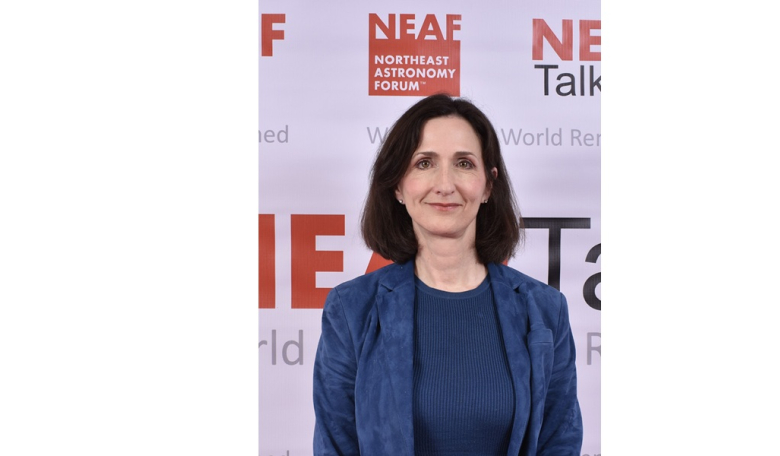Dr Sara Seager, astrophysicist and planetary scientist at MIT, is one of the world’s leading voices in the search for life beyond our solar system. Her groundbreaking work on exoplanets, atmospheric biosignatures and space mission design has helped redefine the frontiers of astrobiology. In this exclusive interview for ROOM by Steve Kelly she shares her insights on the latest discoveries, future technologies, and what it might mean to finally answer the question: are we alone?
Your work has fundamentally shaped how we think about habitable worlds. What first sparked your interest in exoplanets and the search for signs of life?
I’ve always loved astronomy. When I was a child, my dad took me to a star party, one of those events where amateur astronomers bring their telescopes out for the public. I remember seeing the Moon through a telescope for the first time - that was a real “whoa” moment for me.
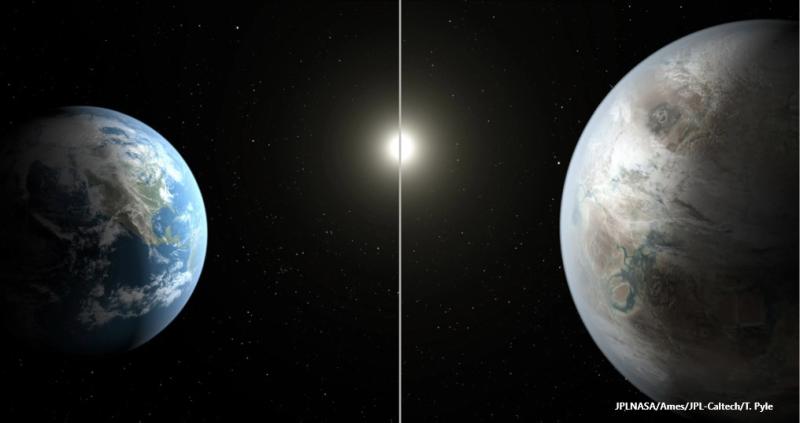 Artistic concept comparing Earth (left) to Kepler-452b, the first confirmed near-Earth-size planet orbiting in the habitable zone of a Sun-like star. Both planets orbit a G2-type star of about the same temperature. However, the star hosting Kepler-452b is 6 billion years old, 1.5 billion years older than our Sun. As stars age, they become larger, hotter and brighter.
Artistic concept comparing Earth (left) to Kepler-452b, the first confirmed near-Earth-size planet orbiting in the habitable zone of a Sun-like star. Both planets orbit a G2-type star of about the same temperature. However, the star hosting Kepler-452b is 6 billion years old, 1.5 billion years older than our Sun. As stars age, they become larger, hotter and brighter.
My dad was from London and camping wasn’t his thing at all. But one summer our babysitter felt sorry for us and insisted that we go camping. That was my dad’s first - and definitely last - camping trip. But not mine! I was lucky that the sky that night was dark and moonless. I stepped out of the tent - just 10 years old - and saw the stars stretched out above me. That moment stuck with me.
Later, when I was 16, I found out you could actually be an astronomer as a job, and I was sold. It wasn’t a straight path, but that’s when the dream really took shape.
 Animation still for a Starshade rendezvous mission concept depicting the in-orbit separation and deployment of a Starshade System and Telescope System that would be co-launched. Starshades dramatically extend the ‘field of regard’ of direct imaging studies towards small, rocky planets orbiting in the habitable zones of their host stars.
Animation still for a Starshade rendezvous mission concept depicting the in-orbit separation and deployment of a Starshade System and Telescope System that would be co-launched. Starshades dramatically extend the ‘field of regard’ of direct imaging studies towards small, rocky planets orbiting in the habitable zones of their host stars.
In grad school in the mid-1990s, I started off in cosmology and the early universe. I had just completed a master’s project on a hard problem - and solved it - but I realised it was kind of a dead end. Then my advisor said, “Why don’t you work on these brand-new exoplanets?” They had just been discovered a few months earlier. Most people didn’t believe the field would go anywhere. But I took the risk. I started working on exoplanet atmospheres.
It’s easy to say now, but that decision changed everything. I got in on the ground floor. Through hard work, a knack for picking the right problems, and a bit of luck - I found a field that was the perfect fit for me. While others didn’t want to spend time on something they thought would go nowhere, I dove in and I got to lay the foundation for a whole new area of science.
With thousands of exoplanets now confirmed, how do you define a truly ‘Earth-like’ planet – and how close are we to finding one?
Everyone in the field has their own definition of what ‘Earth-like’ means. For me, the purest version would be an Earth-mass planet, in an Earth-like orbit, around a Sun-like star. But the reality is that that kind of planet is still out of reach with our current technology.
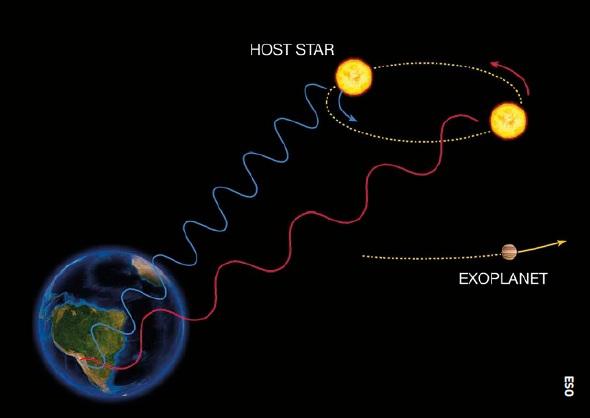 The radial velocity method to detect exoplanets uses ground-based telescopes to detect the tiny ‘wobbles’ an (unseen) planet induces in its host star’s motion as it orbits the star. By regularly looking at the spectrum of a star - and so, measuring its velocity - one can see if it moves periodically due to the influence of a companion.
The radial velocity method to detect exoplanets uses ground-based telescopes to detect the tiny ‘wobbles’ an (unseen) planet induces in its host star’s motion as it orbits the star. By regularly looking at the spectrum of a star - and so, measuring its velocity - one can see if it moves periodically due to the influence of a companion.
Our own Earth, for example, orbits very close to a bright, massive star - the Sun - and that makes it incredibly challenging to detect similar planets elsewhere. Using current indirect detection methods, we can’t easily separate the planet from the glare of its host star. Earth is about 100 times smaller in diameter than the Sun, 10,000 times smaller in area, 300,000 times less massive and up to a billion times fainter in reflected light. It’s a massive technical challenge.
I want to search for signs of life in the atmosphere of Venus by detecting complex molecules that might hint at biological activity
That’s why I’m a strong advocate for starshades - large structures we could deploy in space to block out starlight and allow us to directly image Earth-like planets. It’s one of several exciting ideas being developed to overcome this hurdle.
As for when we’ll find a true Earth twin, we’re actively working on it through two main approaches. The first is radial velocity, using ground-based telescopes to detect the tiny wobbles a planet induces in its host star’s motion. The challenge here is filtering out the ‘noise’ from the star itself, but progress is being made.
The second approach takes us into space, where we’re free from the blurring effects of Earth’s atmosphere. With the precision of space telescopes, and if we know exactly when and where to look, we have a real shot at finding and studying an Earth-like world.
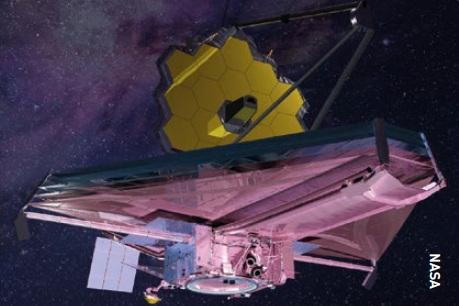 The James Webb Space Telescope gives us our first real opportunity in human history to try to answer the question: are we alone? It’s capable of analysing exoplanet atmospheres for potential biosignatures - gases or combinations of gases that might be associated with life.
The James Webb Space Telescope gives us our first real opportunity in human history to try to answer the question: are we alone? It’s capable of analysing exoplanet atmospheres for potential biosignatures - gases or combinations of gases that might be associated with life.
The James Webb Space Telescope (JWST) is already delivering remarkable data. What role do you see it playing in identifying biosignatures on distant worlds?
There’s a lot to discover out there. When we think about life, we start peeling back the layers of an onion, and ask, “what does life actually need?” First, it needs the right temperature - not too hot, or complex molecules break apart; not too cold, or everything’s frozen and chemistry shuts down. Somewhere in between, you can have liquid - ideally water, although it could be another liquid - where molecules can move, interact and reorganise. And you also need an energy source to drive reactions.
That’s pretty much it. Some people argue you need one more thing but I tend to leave it at the basics; the conditions needed for Darwinian evolution.
Now, we already know of exoplanets that probably have those conditions. Those the James Webb Space Telescope can study, we call ‘Earth cousins.’ They’re not exactly Earth-like - they orbit red dwarf stars, not Sun-like stars. And because these stars emit less energy, the planets would have to orbit much closer in to stay warm. But they might still have liquid water, or some other liquid environment that could support life.
JWST gives us our first real opportunity in human history to try to answer the question: Are we alone? It’s capable of analysing exoplanet atmospheres for potential biosignatures - gases or combinations of gases that might be associated with life.
But there are challenges. One major issue right now is stellar contamination - star spots, flares and other activity on the star’s surface can interfere with the data. These can mimic or mask the signals we’re trying to detect in planetary atmospheres. That being said, a lot of brilliant minds are working on these problems. We’re not there yet, but we’re making progress - and JWST is the tool that could get us the first big clues.
You’ve led major efforts to develop new technologies for detecting life. What’s next on the horizon for exoplanet observation tools?
One of the tools I’m most excited about isn’t for distant exoplanets, but actually for solar system exploration - particularly Venus, which is a big focus of my work. I want to search for signs of life in the atmosphere of Venus by detecting complex molecules that might hint at biological activity.
Imagine throwing a cloud of high-tech confetti into the atmosphere. But instead of paper, each piece is a tiny, chip-based sensor. We’d release thousands of them, and as they float through the atmosphere, they’d come into contact with particles - possibly liquid droplets - and analyse them in real-time. Each chip would be designed to detect a specific molecule or class of molecules. If it finds what it’s looking for, it sends back a simple yes/no signal.
The idea is that we could customise these chips to search for a wide range of biosignature molecules - things that might be produced by life. Some chips might be highly specialised, looking for just one molecule. Others might be more versatile, with multiple chemical wells to test for a variety of compounds.
What’s exciting is that this kind of technology could be adapted not just for Venus, but for many other worlds - even Earth - in applications like environmental monitoring or biosensing in extreme environments.
It’s early days, but this is the kind of bold, creative leap we need if we’re serious about finding life beyond Earth.
 The goals of MIT’s Morning Star Missions to Venus Habitability Probe mission, planned for 2031, are to search for the building blocks of life in the clouds of Venus, determine the acidity of cloud particles and determine the unknown UV absorber in the clouds.
The goals of MIT’s Morning Star Missions to Venus Habitability Probe mission, planned for 2031, are to search for the building blocks of life in the clouds of Venus, determine the acidity of cloud particles and determine the unknown UV absorber in the clouds.
From your perspective, what are the most promising biosignature gases or chemical markers we should be looking for in exoplanet atmospheres?
There isn’t a definitive answer to this question. Oxygen is often favoured, but for every advocate of oxygen, there’s likely someone who can propose a counterargument. It’s a way to challenge and refine our ideas. Personally, I have a strong preference for phosphine; it’s my top choice.
For me, the purest definition of an ‘Earth-like planet’ would be an Earth-mass planet, in an Earth-like orbit, around a Sun-like star
While we don’t have a perfect list, there’s a growing collection of favoured candidates. Phosphine and methane - especially in significant quantities are noteworthy. It’s important to consider not just individual gases, but how they interact with their surrounding environment. Many people have their favourites, but for every new candidate someone presents, there’s always a counterpoint - like the recent discovery of dimethyl sulphide on a comet. While intriguing, it’s been found in volcanic settings here on Earth and doesn’t necessarily indicate life, so there’s still much to explore.
How do you balance scientific caution with public enthusiasm when it comes to potential discoveries of alien life?
Striking a balance between caution and enthusiasm is essential and it’s important to acknowledge that reported discoveries can sometimes spiral out of control. If you look back at the announcement of phosphine in the clouds of Venus, which occurred during the COVID-19 pandemic, there were 30,000 viewers - a significant audience for a scientific event. We never claimed that there was life in Venus’ atmosphere. The three of us, including Professor Jane Greaves, William Bains and myself, made it clear that we weren’t asserting the existence of life on Venus. However, many people still jumped to that conclusion. No matter how careful or tentative we are in our messaging, excitement tends to take on a life of its own.
 Sara Seager is introduced to the audience at NEAF
Sara Seager is introduced to the audience at NEAF
What would discovering life beyond Earth mean for science - and for humanity?
We are incredibly excited about this possibility because even one more example of life having an independent origin from Earth, would allow us to confidently suggest that life could exist in many other places. While life began on Earth, we often wonder if that was merely a rare occurrence or if it’s something that happens regularly throughout the universe.
Whether it’s on Venus, Enceladus, Europa or even subsurface Mars, we are eager to find any evidence of life. The implications of such a discovery would be profound: it would mean that we are not alone. If even the simplest forms of life can exist somewhere, there’s no reason to believe that a variety of life forms couldn’t exist elsewhere as well.
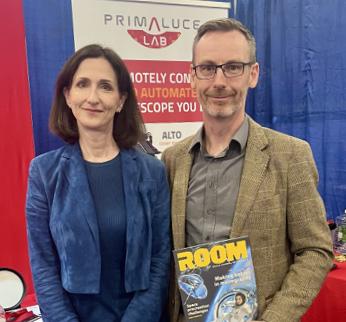 ROOM’s Steve Kelly with Sara Seager after their interview.
ROOM’s Steve Kelly with Sara Seager after their interview.
About the interviewee
Sara Seager is an astrophysicist and a Professor of Physics, Professor of Planetary Science, and Professor of Aeronautics and Astronautics at the Massachusetts Institute of Technology. She has been a pioneer in the vast and unknown world of exoplanets. Her ground-breaking research ranges from the detection of exoplanet atmospheres to innovative theories about life on other worlds to development of novel space mission concepts. Her current research interests are focused upon the discovery and characterisation of exoplanets. Dr Seager is an Officer of the Order of Canada, a member of US National Academy of Sciences, a recipient of the Magellanic Premium Medal (awarded for major contributions in the field of navigation, astronomy, or natural philosophy), and has Asteroid 9729 named in her honour.





